The ankle I severely fractured in January continues to interfere with my wildflower outings. Although I’m able to walk a couple of miles now, I have limited range of motion, which makes it hard to cover much distance on uneven ground like unpaved trails or prairies. My ankle flexion is still too limited for me to feel comfortable doing the long bike rides that used to provide lots of material for this series.
This week, I struck out looking for the plants I had hoped to feature. So I dove into my files and pulled out a selection of wildflowers I’ve found in August over the past six years.
2016
I cycled on many trails in August 2016. Some kind of bees were enjoying these common sneezeweed flowers.
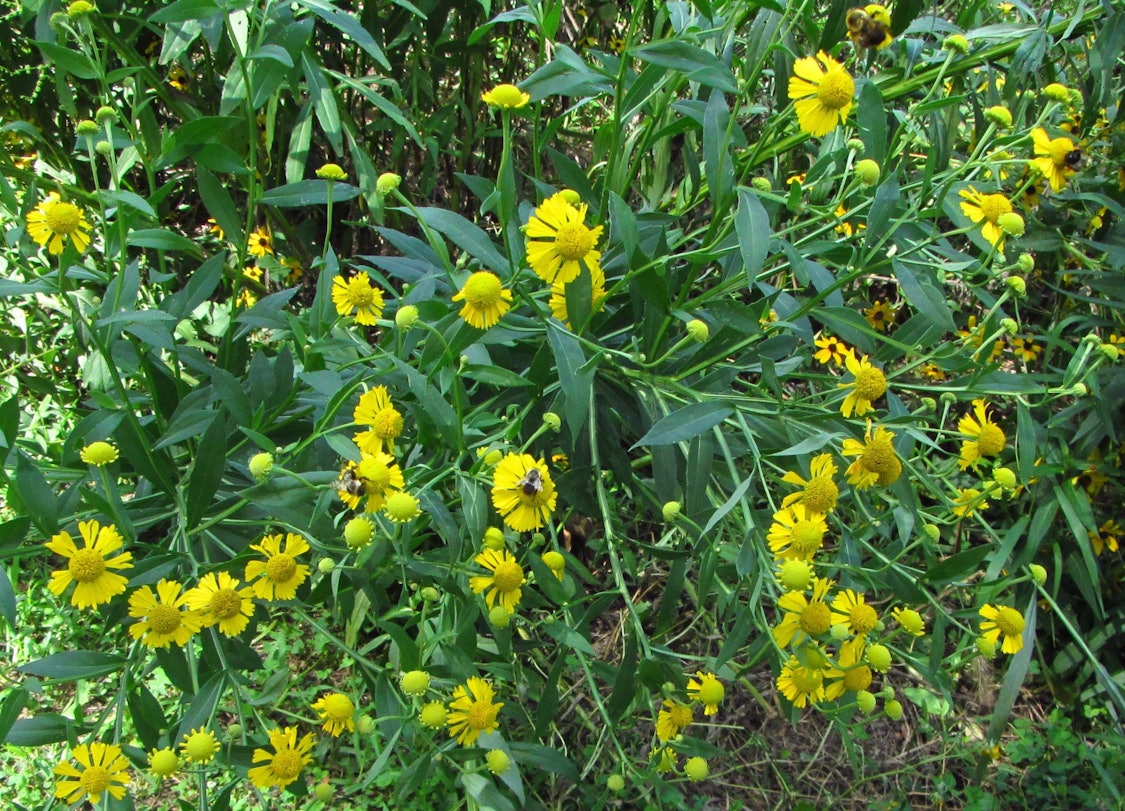

Round-headed bush clover growing alongside partridge pea:
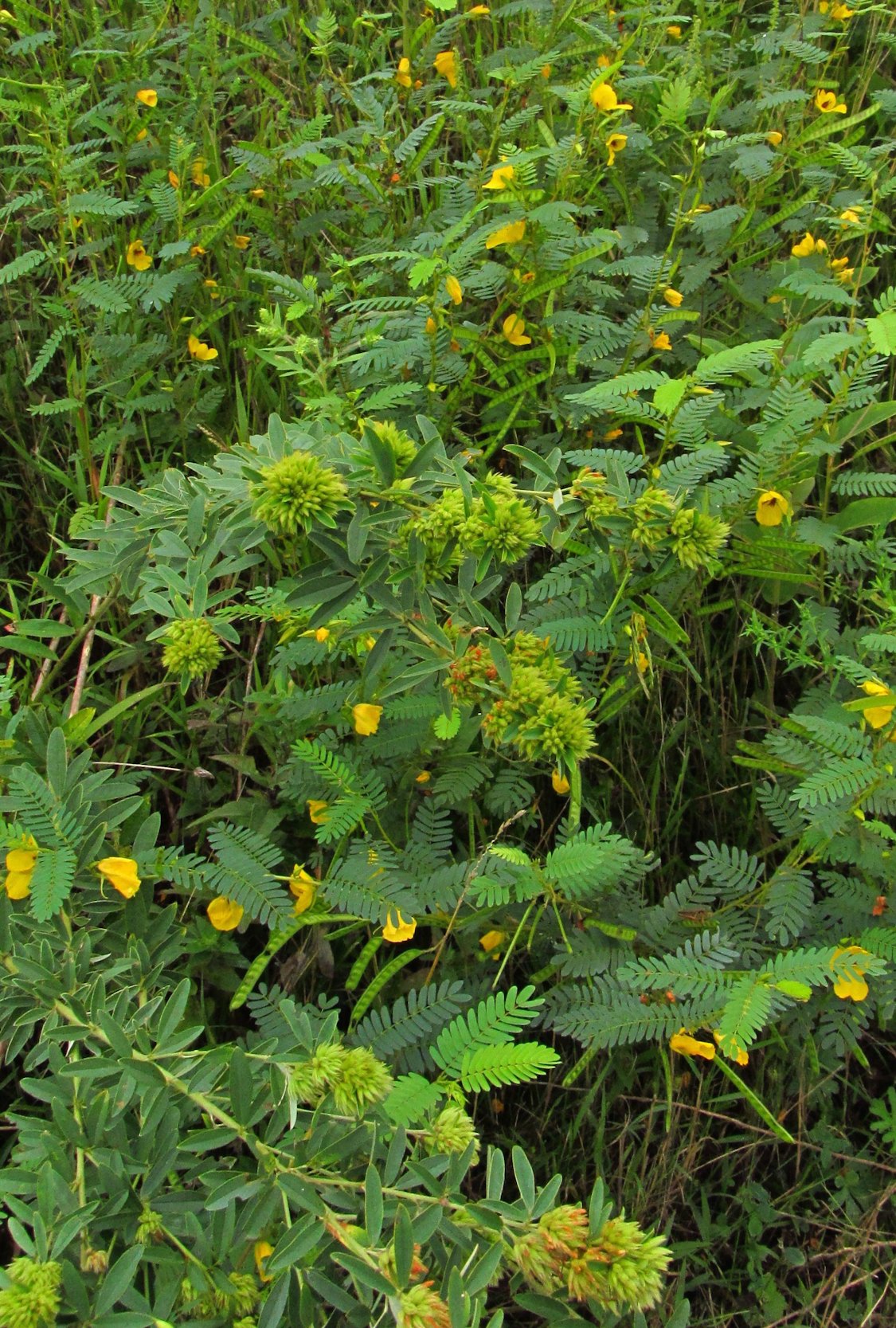
The white flowers are spotted bee balm, also known as spotted horsemint. I also have this photo labeled brown-eyed Susan, but now I’m wondering whether the yellow flower heads are black-eyed Susan.
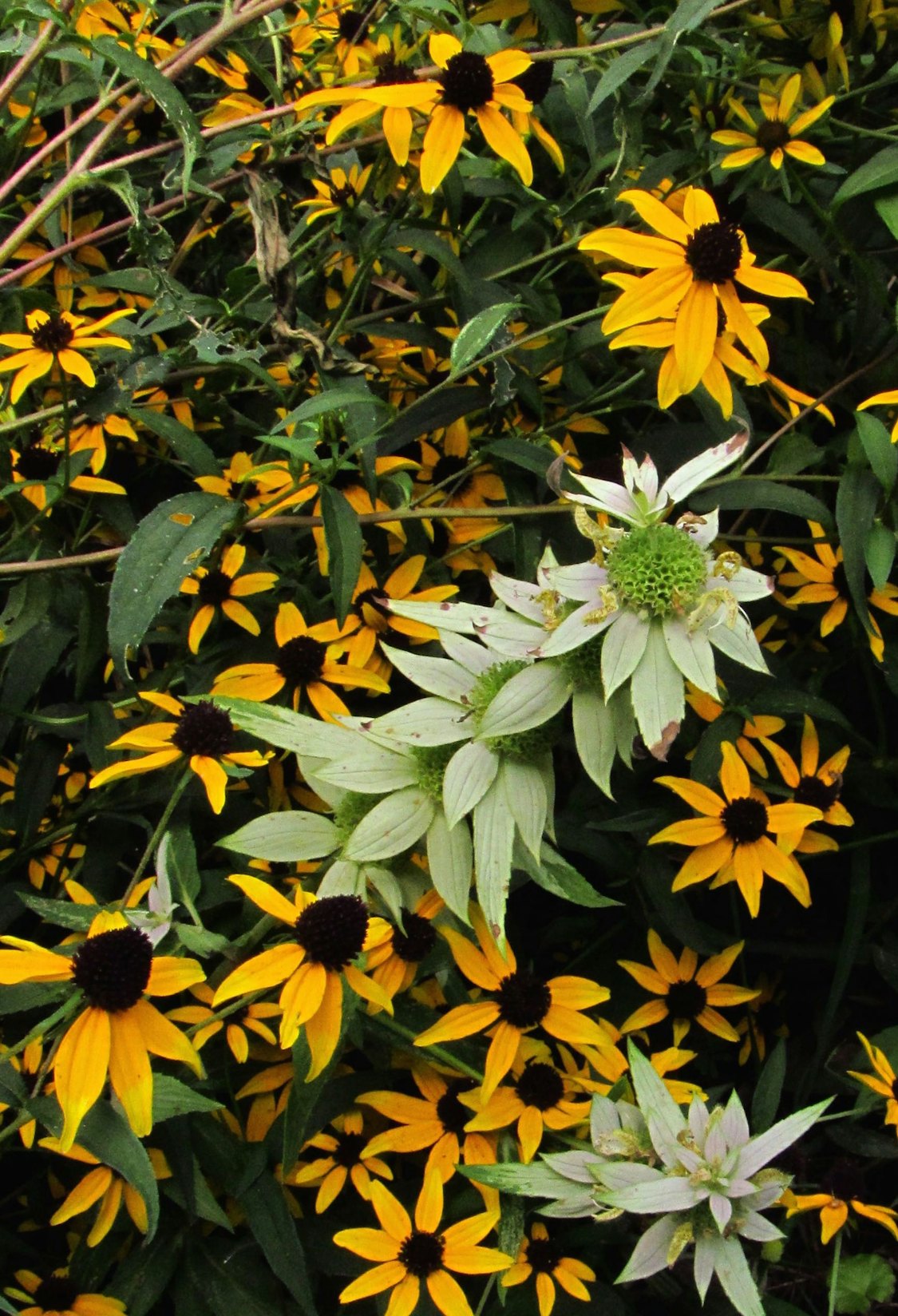
Tall blue lettuce growing along the Windsor Heights trail.
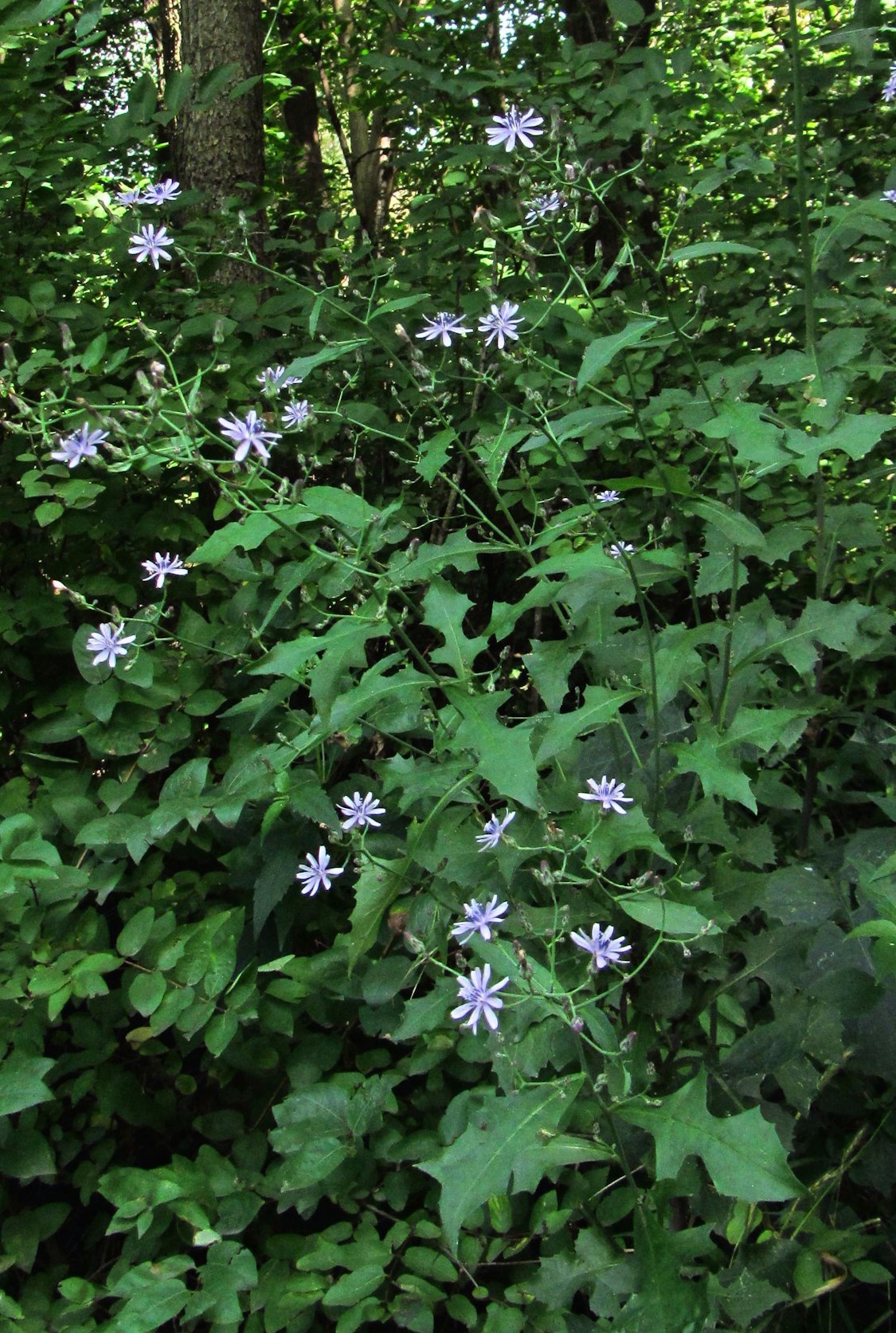
I think I found this small smooth hedge nettle plant in Urbandale.
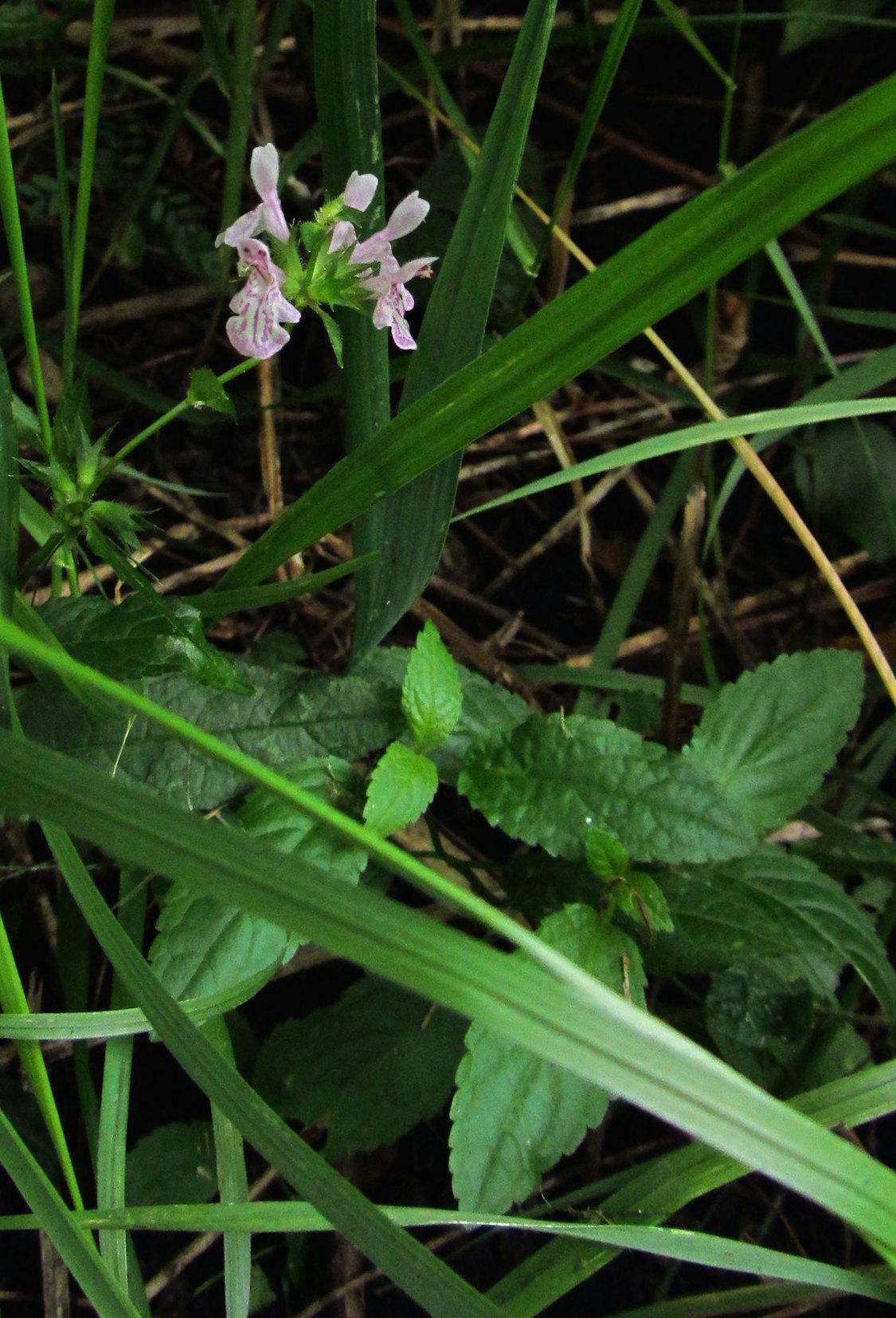
Near Gray’s Lake in Des Moines, compass plants tower over a colony of common evening primrose.
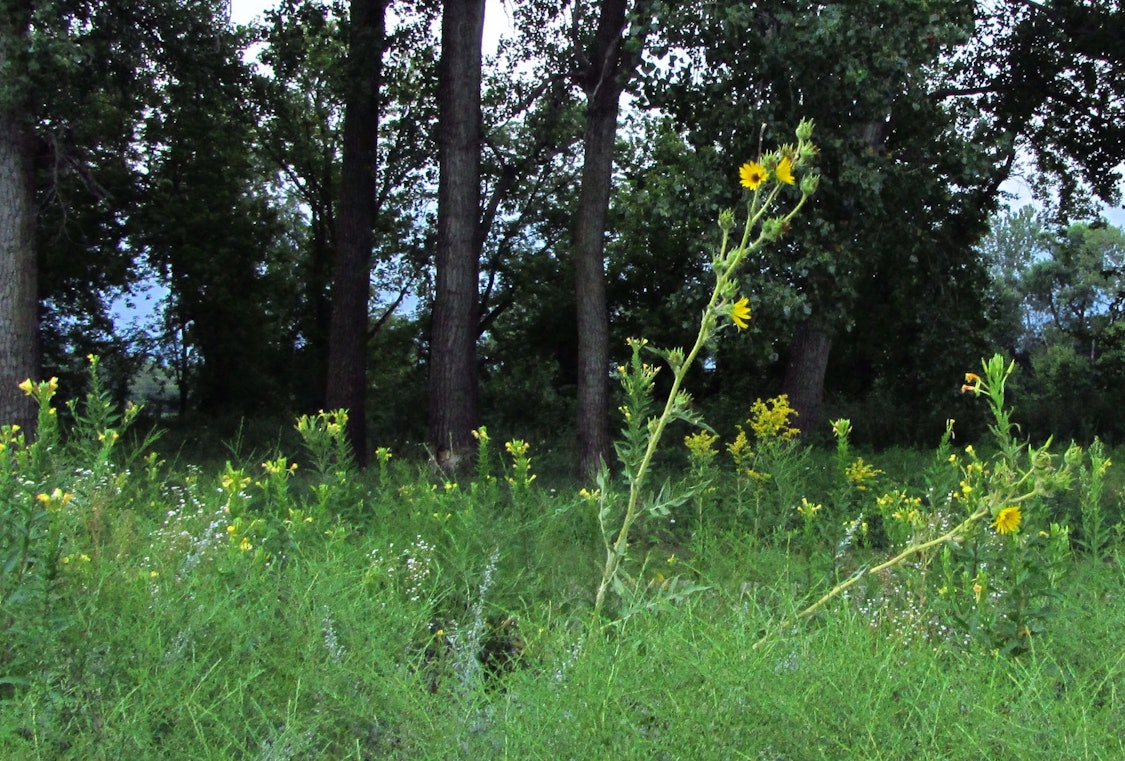
A closer look at the common evening primrose.

Not far from Gray’s Lake, a prairie planting had some tall cinquefoil.
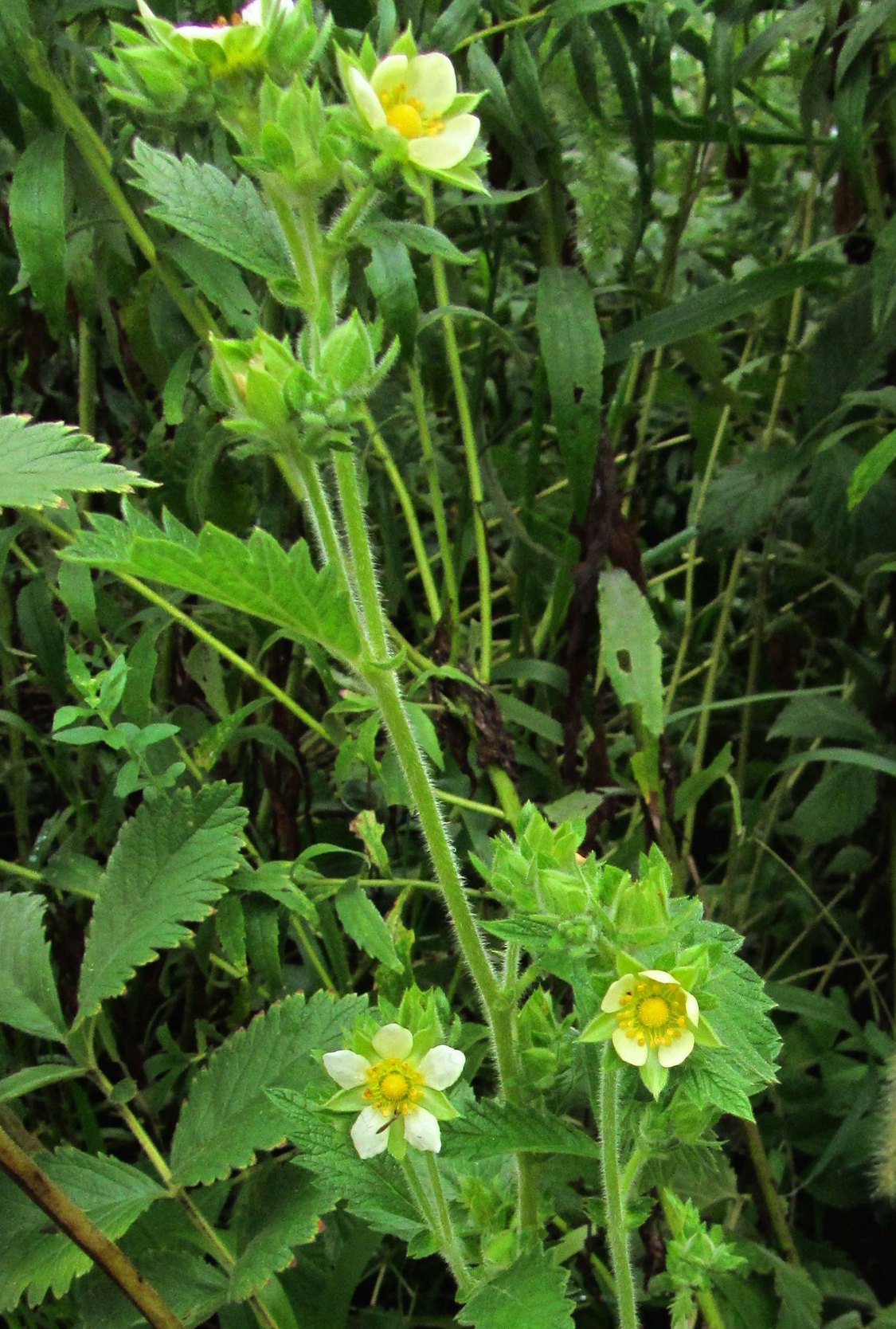
Hairy aster, also known as frost aster, was just starting to bloom.
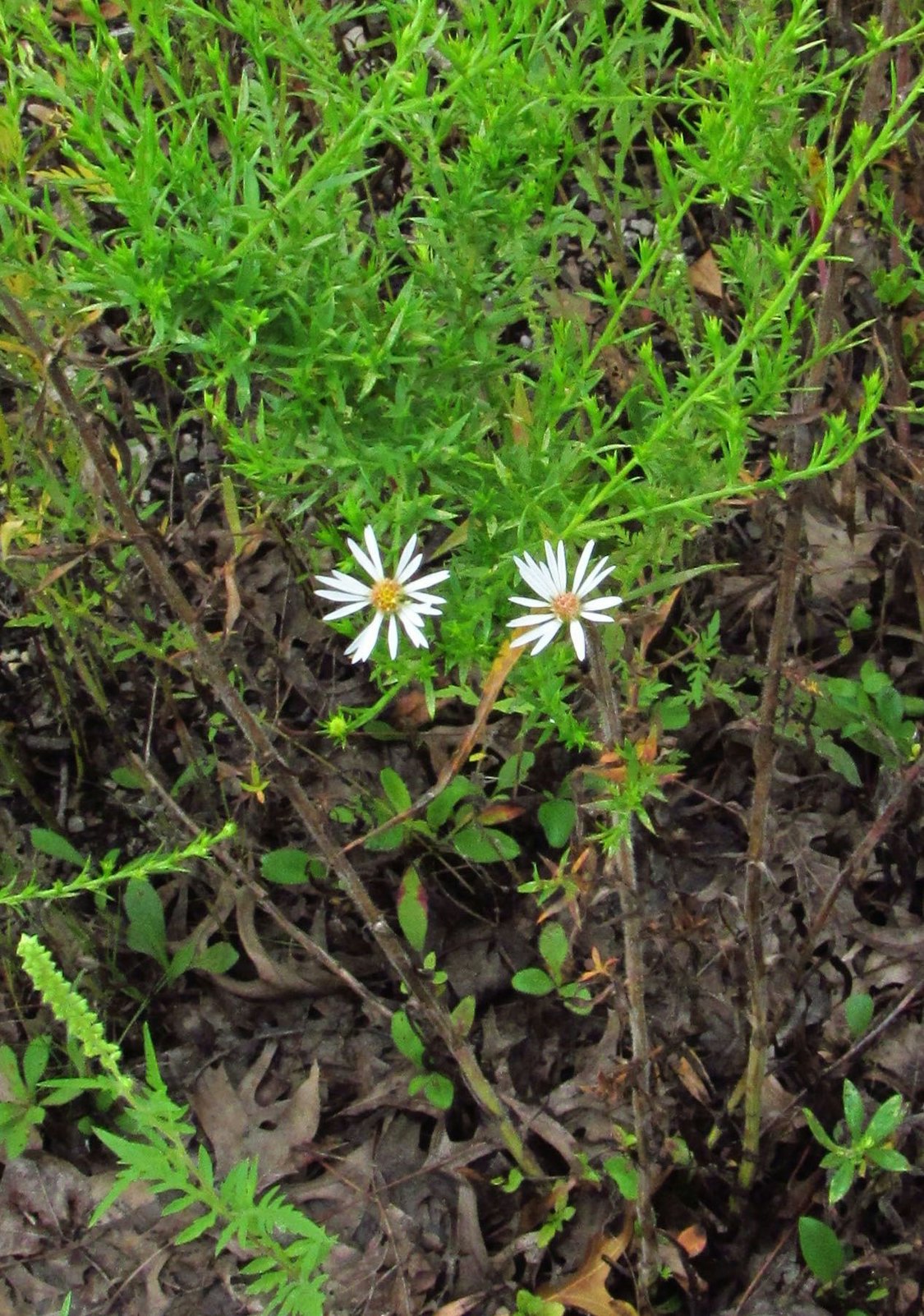
So was cutleaf coneflower (shown here with an enormous gall).
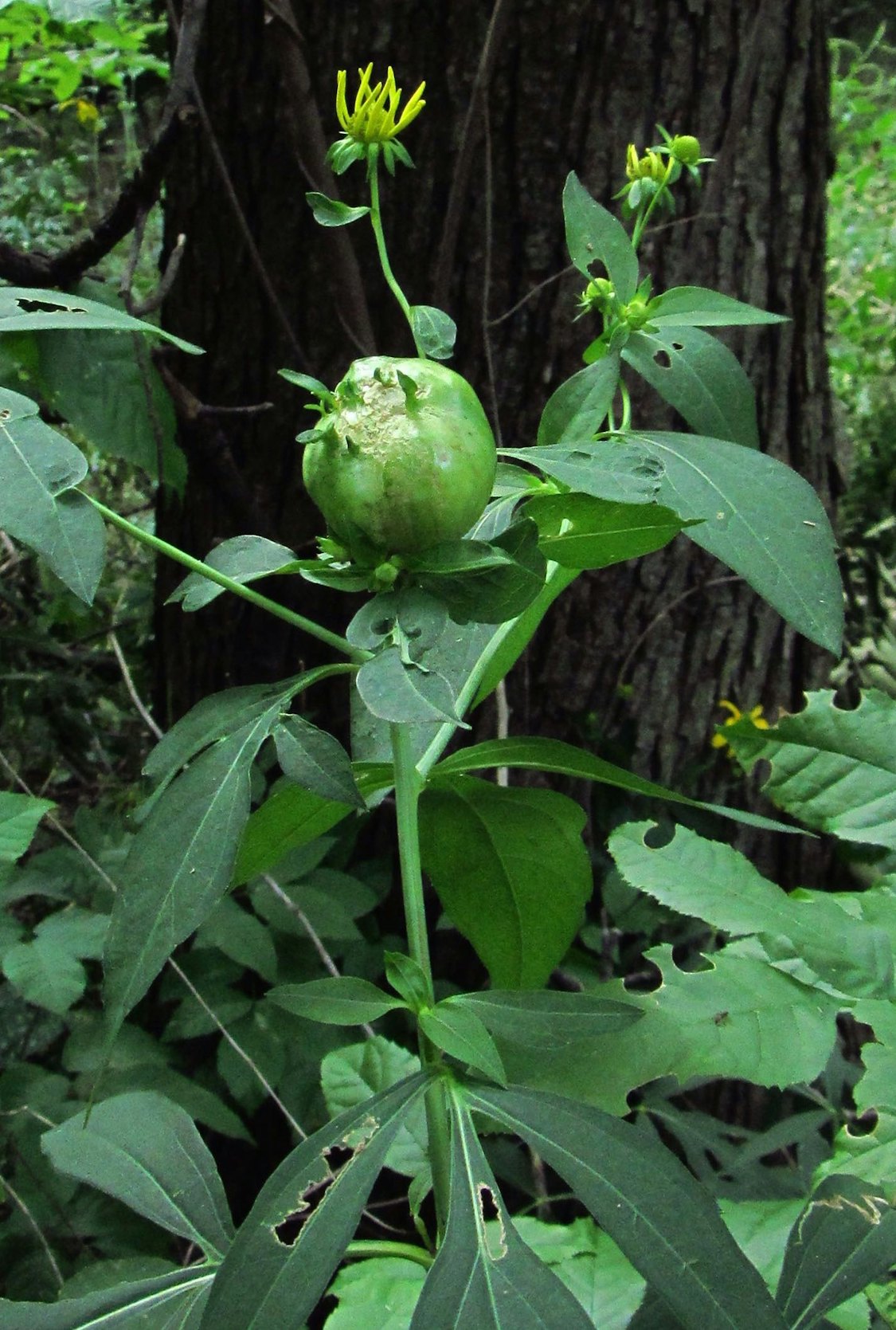
2017
One of my all-time favorites, yellow jewelweed, was blooming next to a bike trail.

I found some false boneset plants blooming on Mike Delaney’s restored Dallas County prairie.

Also at Mike’s prairie, I finally caught Culver’s root while it was blooming.
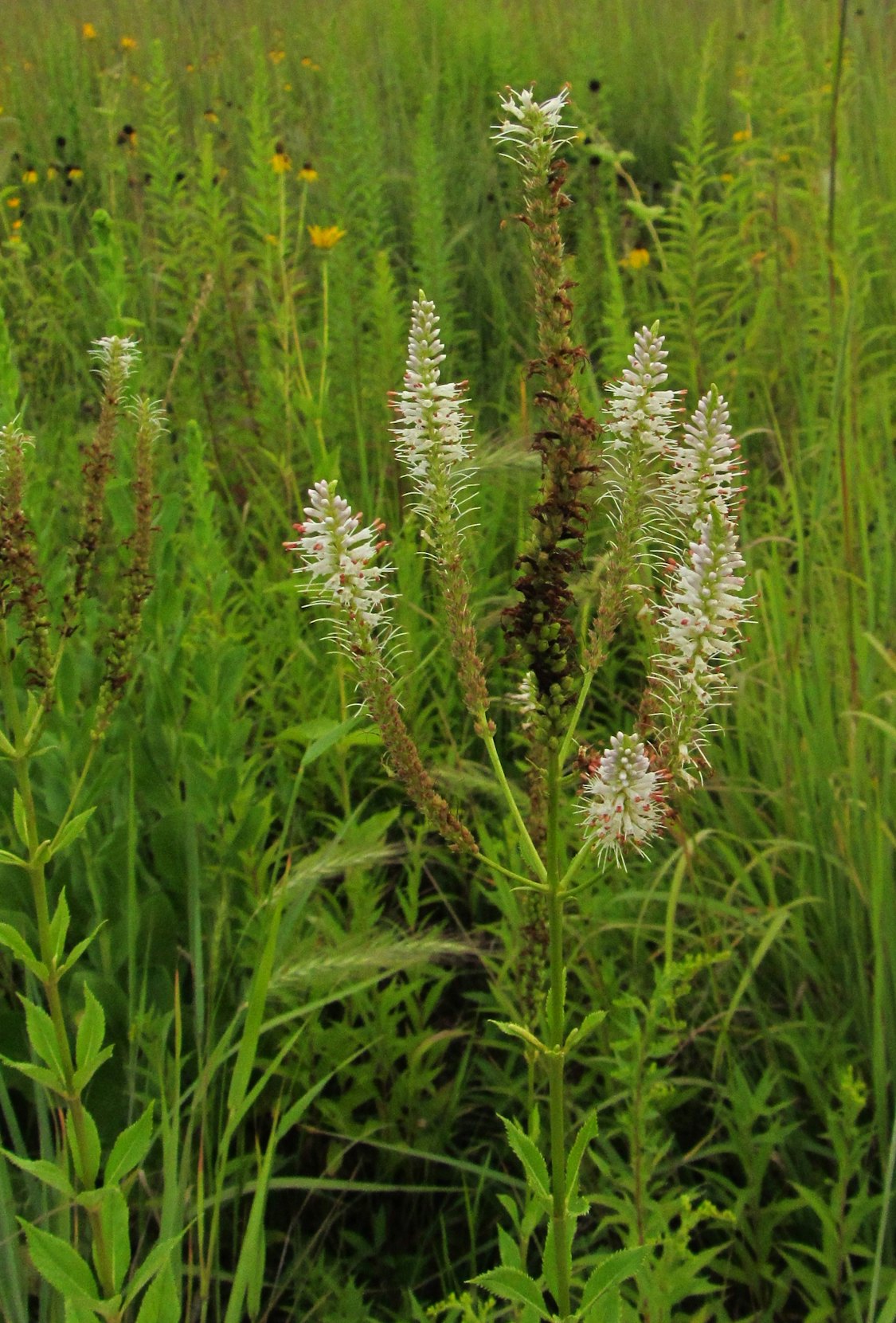
I couldn’t believe that I was able to photograph this American bellflower before the swallowtail butterfly perched on top flew away.
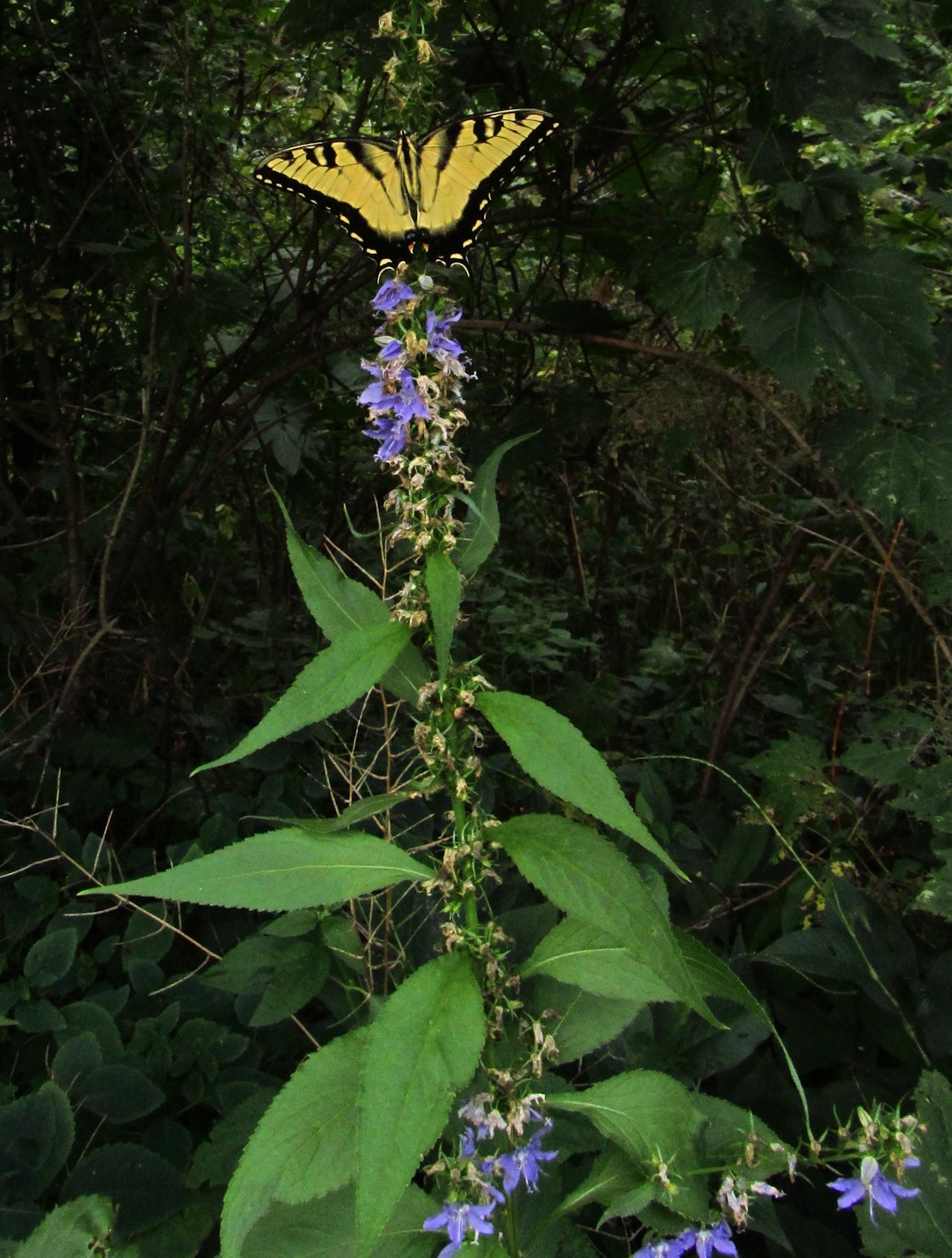
Yellow giant hyssop can be found on some wooded trails.

I don’t see blue vervain, pictured here, nearly as often as its relative hoary vervain.

I never see winged loosestrife anymore in the area I found it five years ago. Other plants seem to have displaced it.

2018
Growing out of a crack near the bottom of our driveway, a little pokeweed plant was starting to flower.
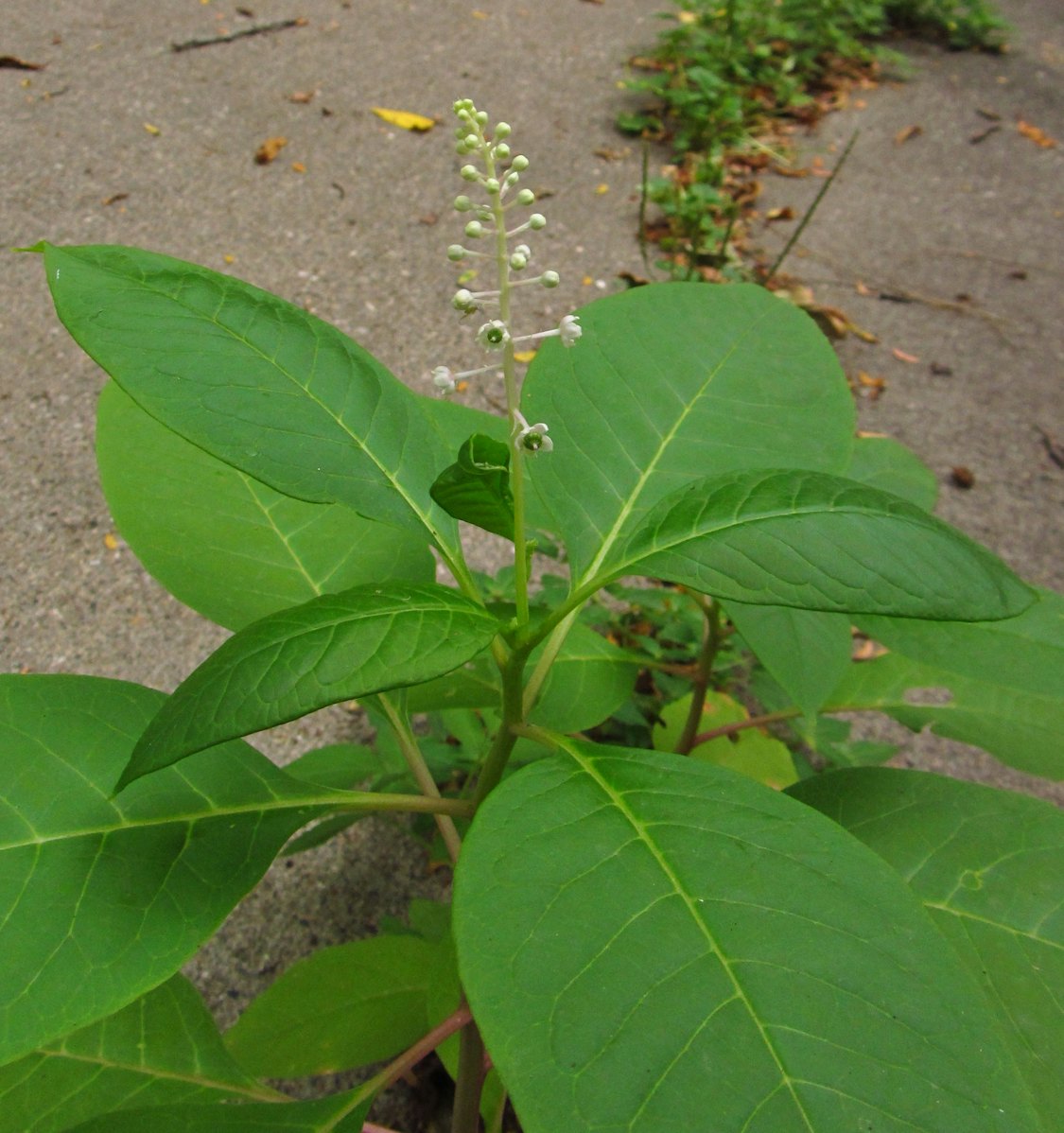
Monkey flower was blooming in a small prairie patch.

Obedient plant is also known as false dragonhead.
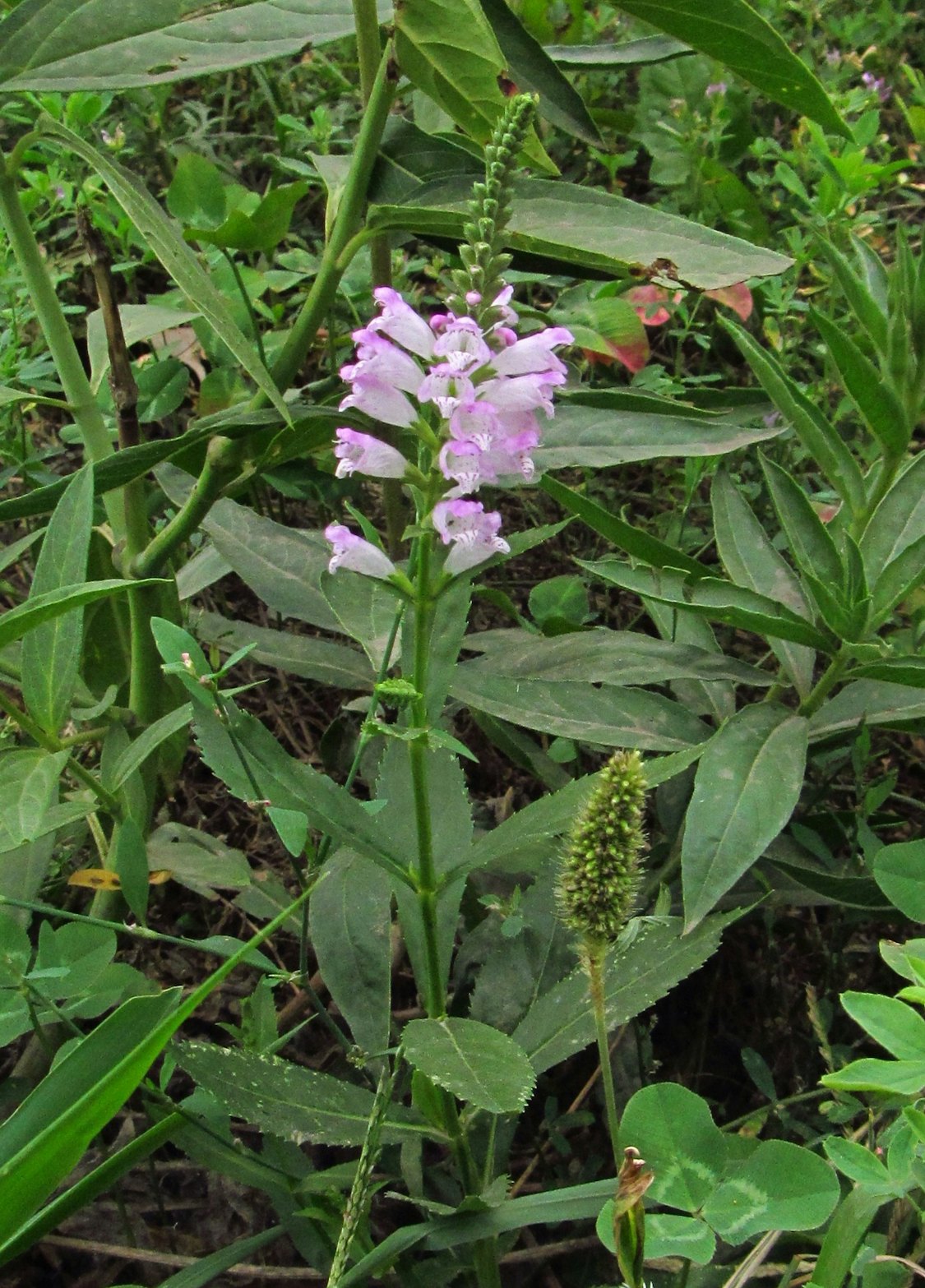
I often biked past Gray’s Lake in Des Moines on my way to or from the downtown farmers market. This prairie ironweed plant was starting to bloom.
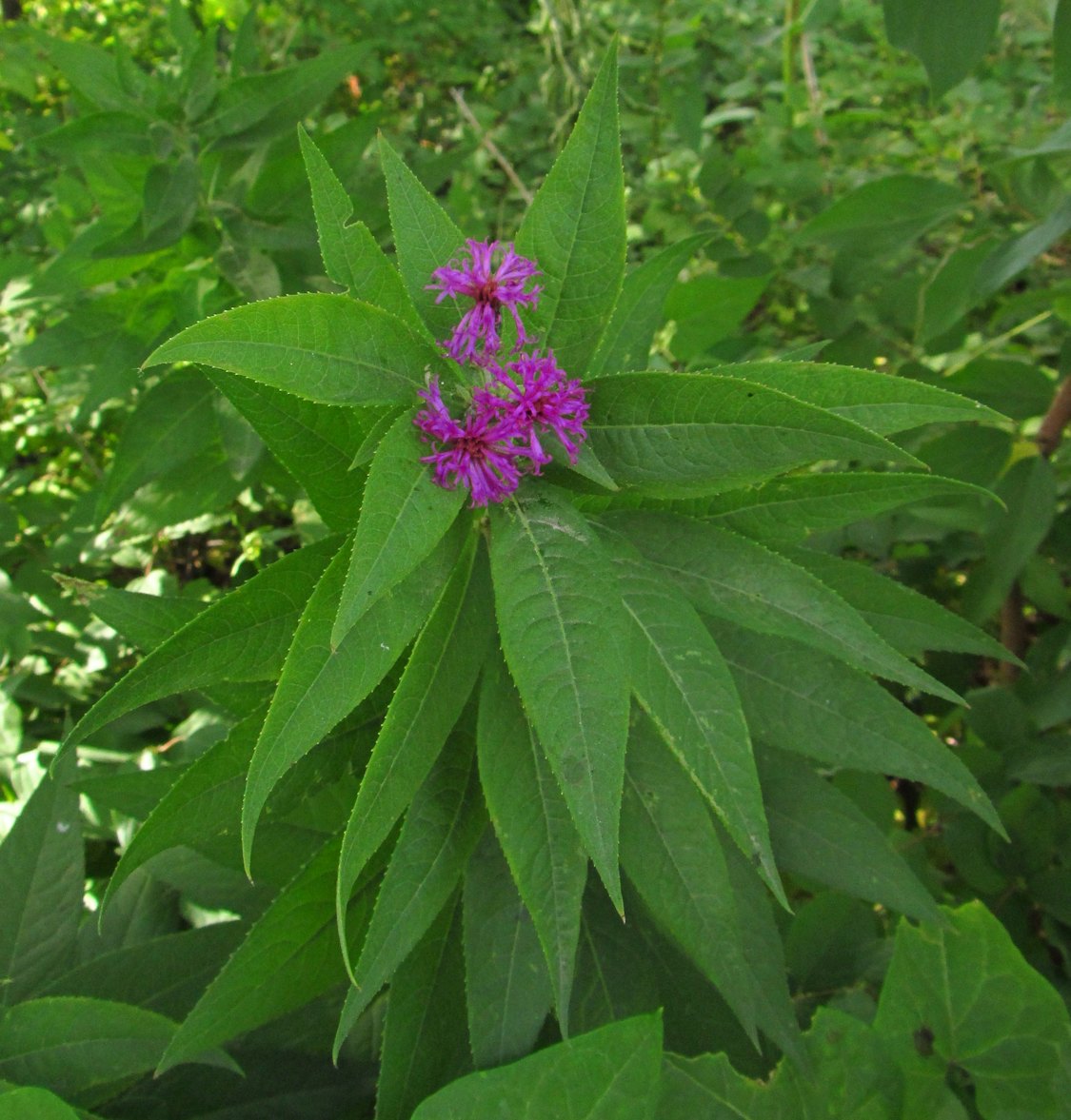
Near another segment of bike trail, I found patches of hedge bindweed.

Purple giant hyssop plants have so many flowers.
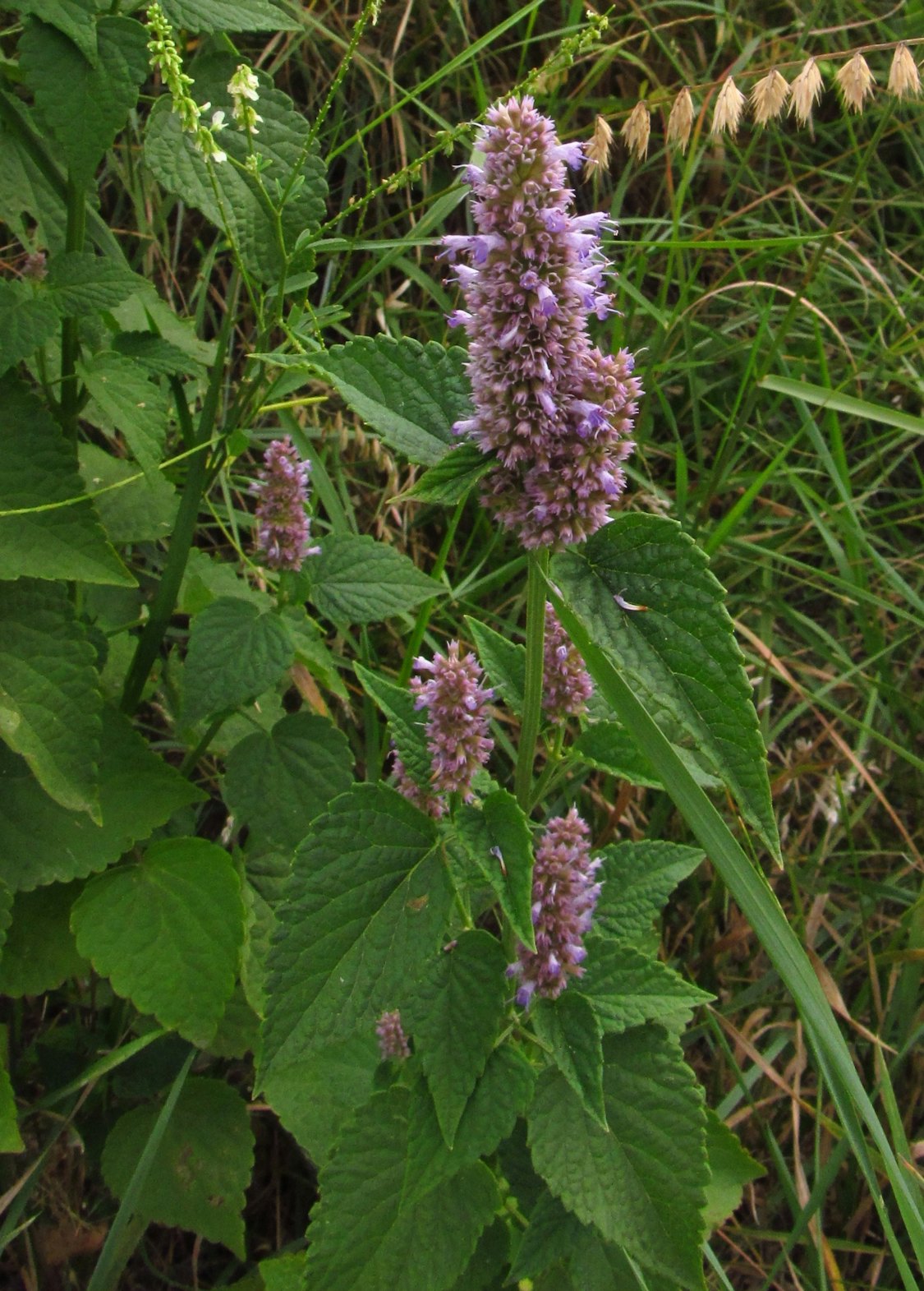
Chicory originated in Europe, but it’s become prevalent across much of the country, and pollinators love it. You’ll often find it near the side of the road.
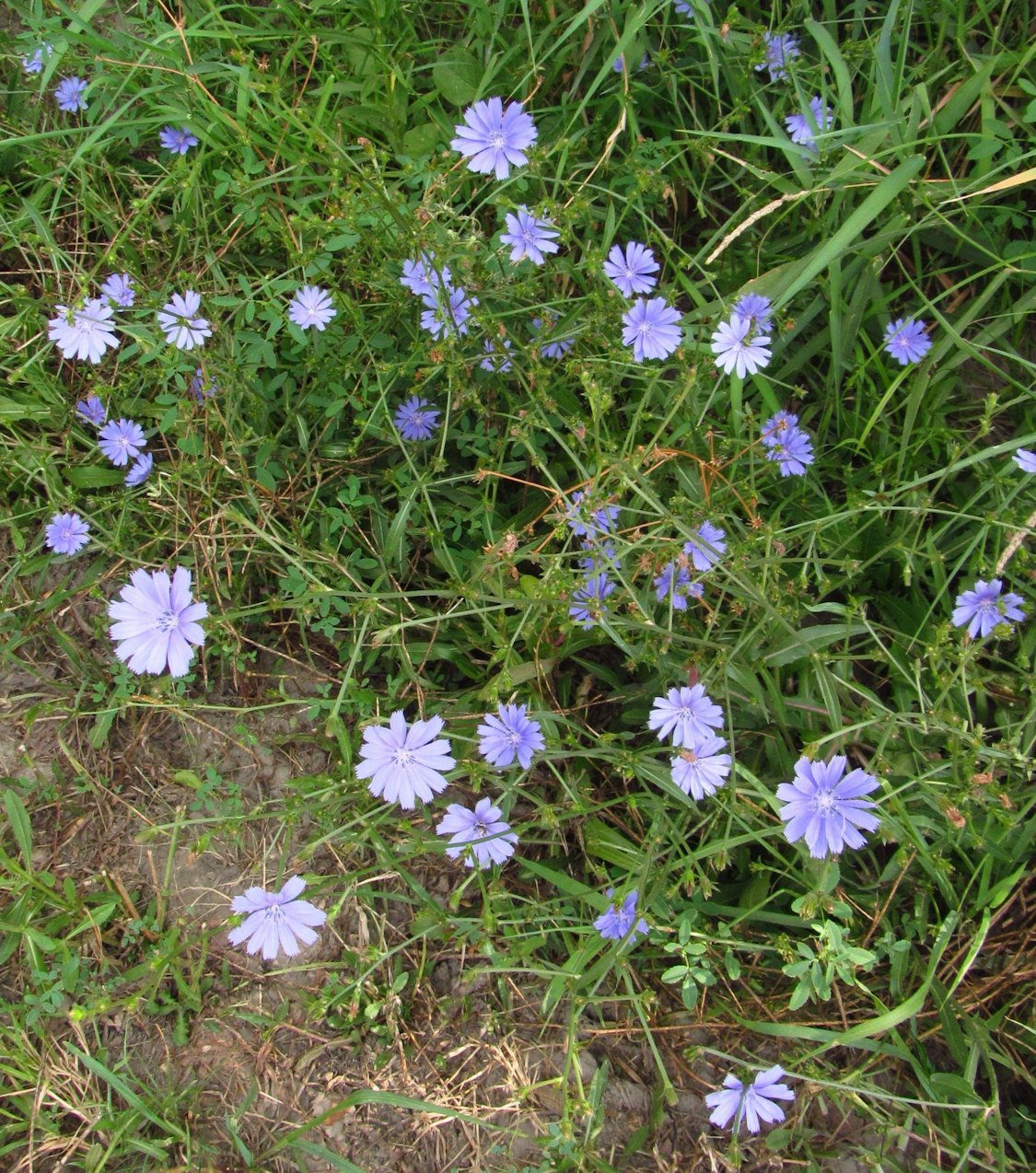
White snakeroot usually starts blooming in August.
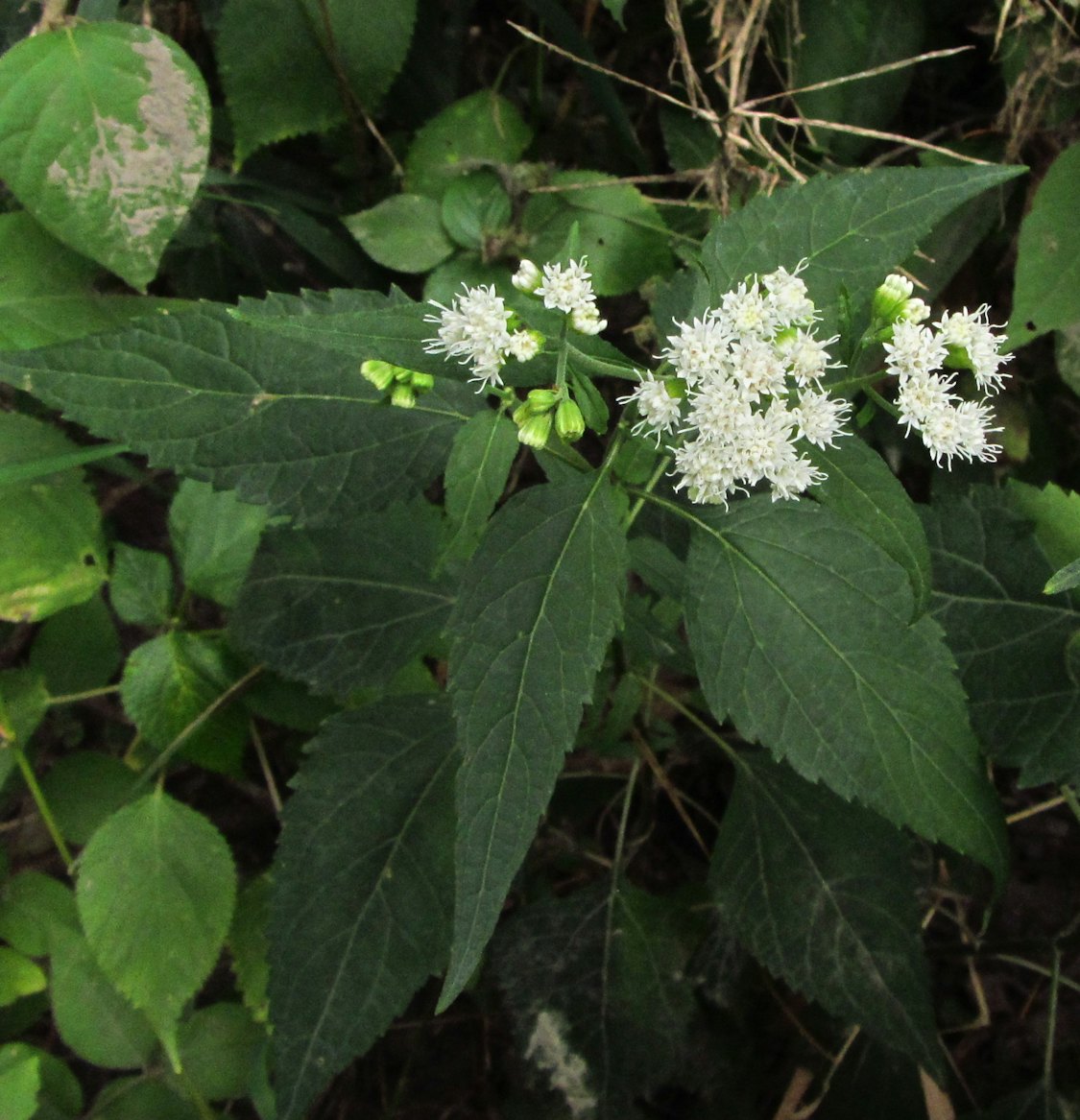
The tiny flowers of white vervain are so difficult to photograph.
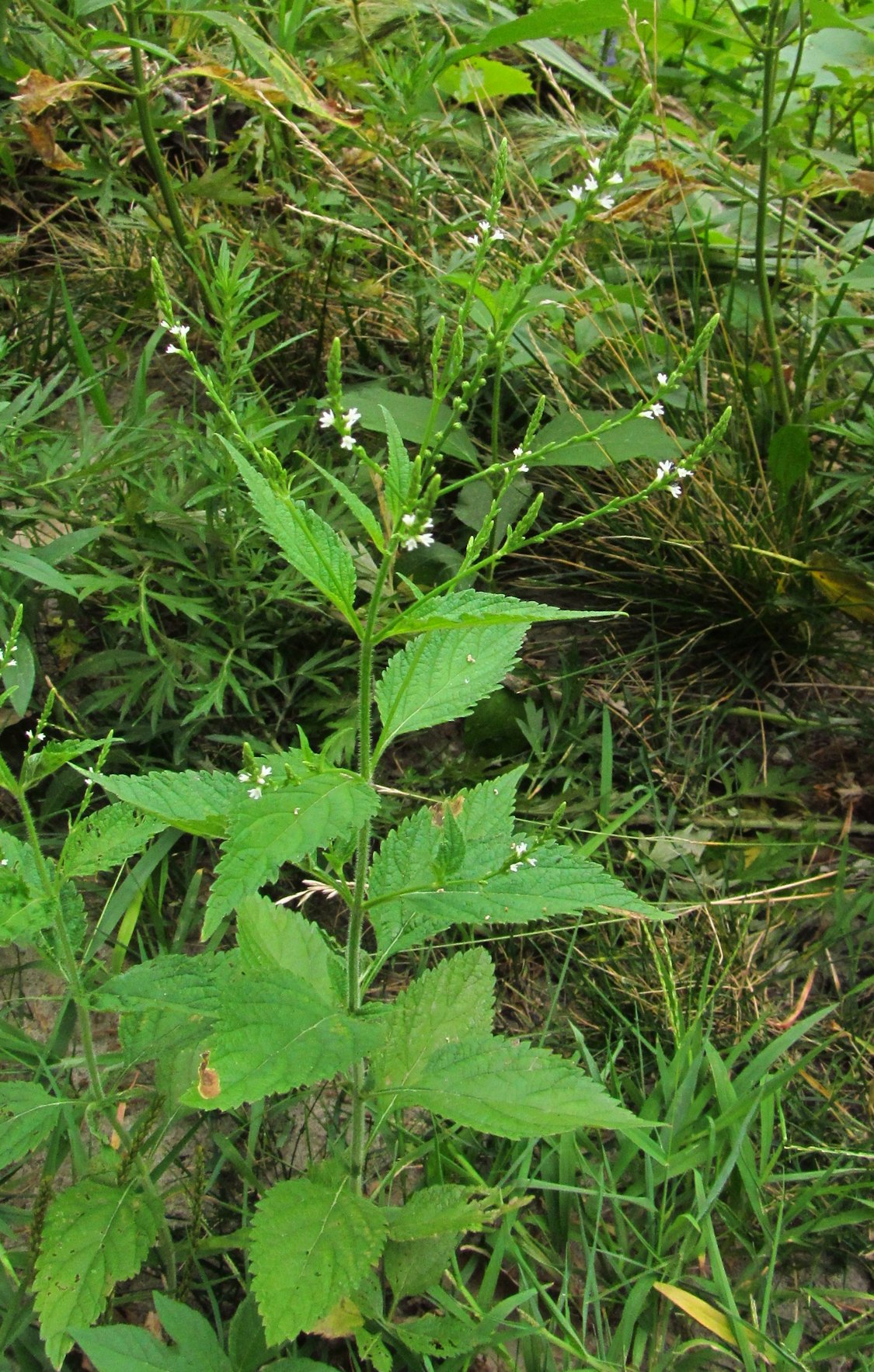
2019
In early August 2019, one of my childhood friends came back for a visit, and we went down to the Neal Smith National Wildlife Refuge near Prairie City. She and her partner loved the outing. Here’s a shot of rosinweed (the taller plants with yellow flower heads) and rattlesnake master.

On the left, yellow or gray-headed coneflowers. On the right, cup plants.

Clearweed leaves are so shiny. This plant was growing near my Windsor Heights home.
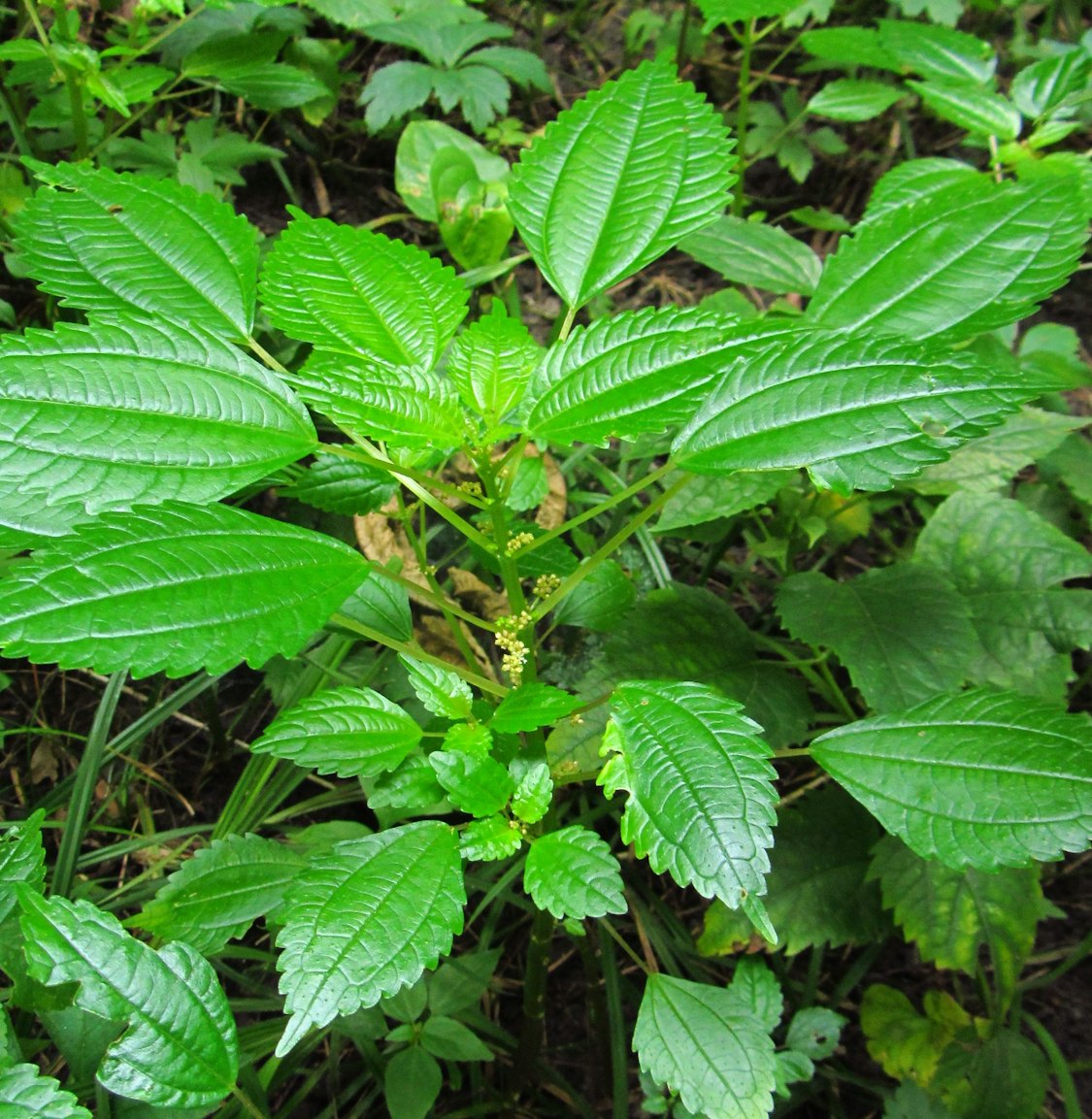
Some sweet Joe-Pye weed was blooming in a neighbor’s yard.
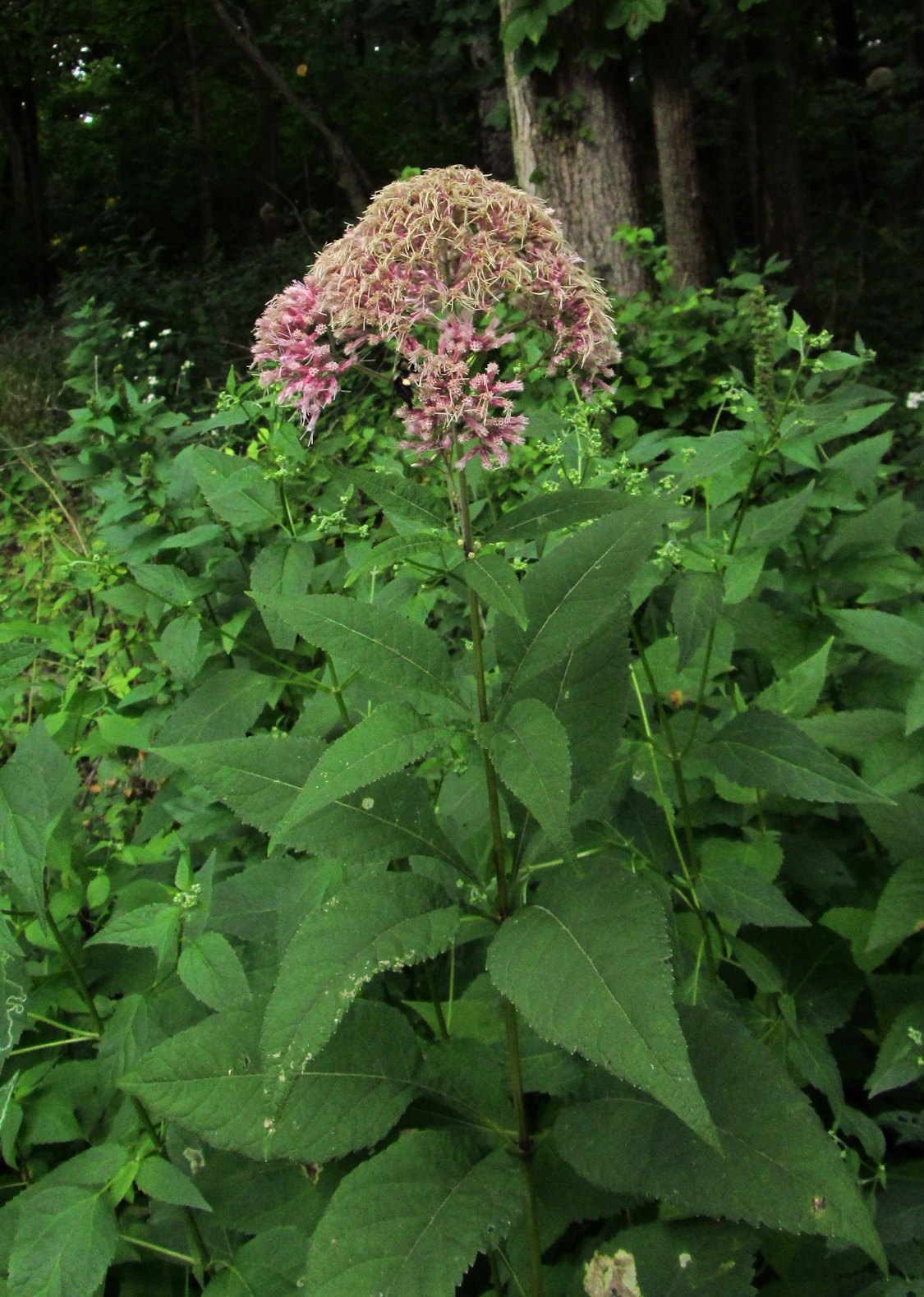
Near the end of the month, I visited the Greater Des Moines Botanical Garden, where many wildflowers have been planted near the parking lot. This is tall coreopsis:

2021
In August 2020, I was overwhelmed covering various stories related to the COVID-19 pandemic and hardly got out with my camera. So I’ll close out this post with a few shots from last year.
Longtime Bleeding Heartland readers know that sometimes I showcase a plant that everyone hates. It could be invasive, poisonous, or maybe it causes a horrible rash. This shot from August 2021 features two native plants that are almost universally detested. The flowers starting to open are Carolina horsenettle, and the rows of sticky green burs are Virginia stickseed.

Here’s something more pleasant: ground cherry flowers and fruit forming.
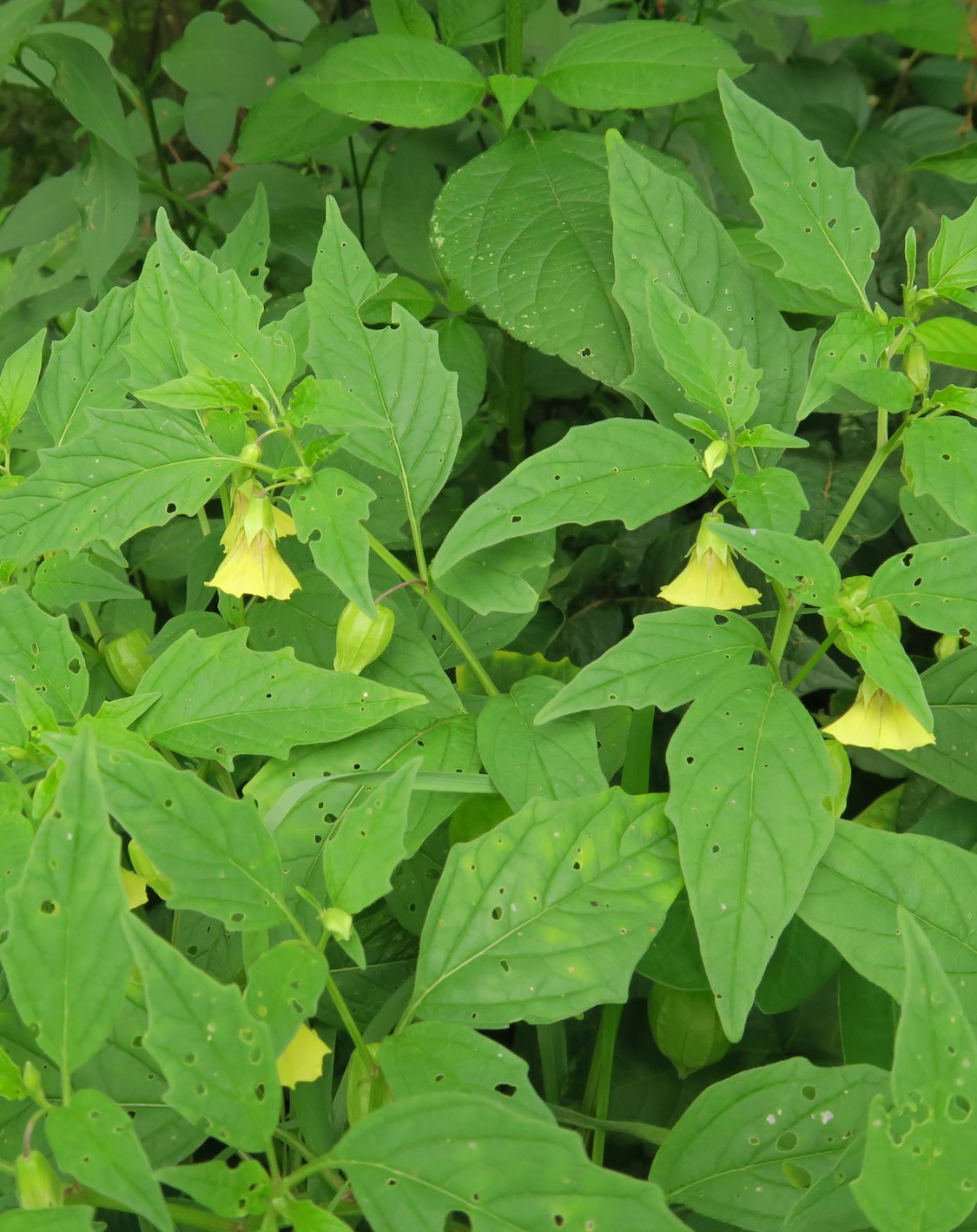
Finally, I offer two views of the native pointed-leaf tick trefoil.
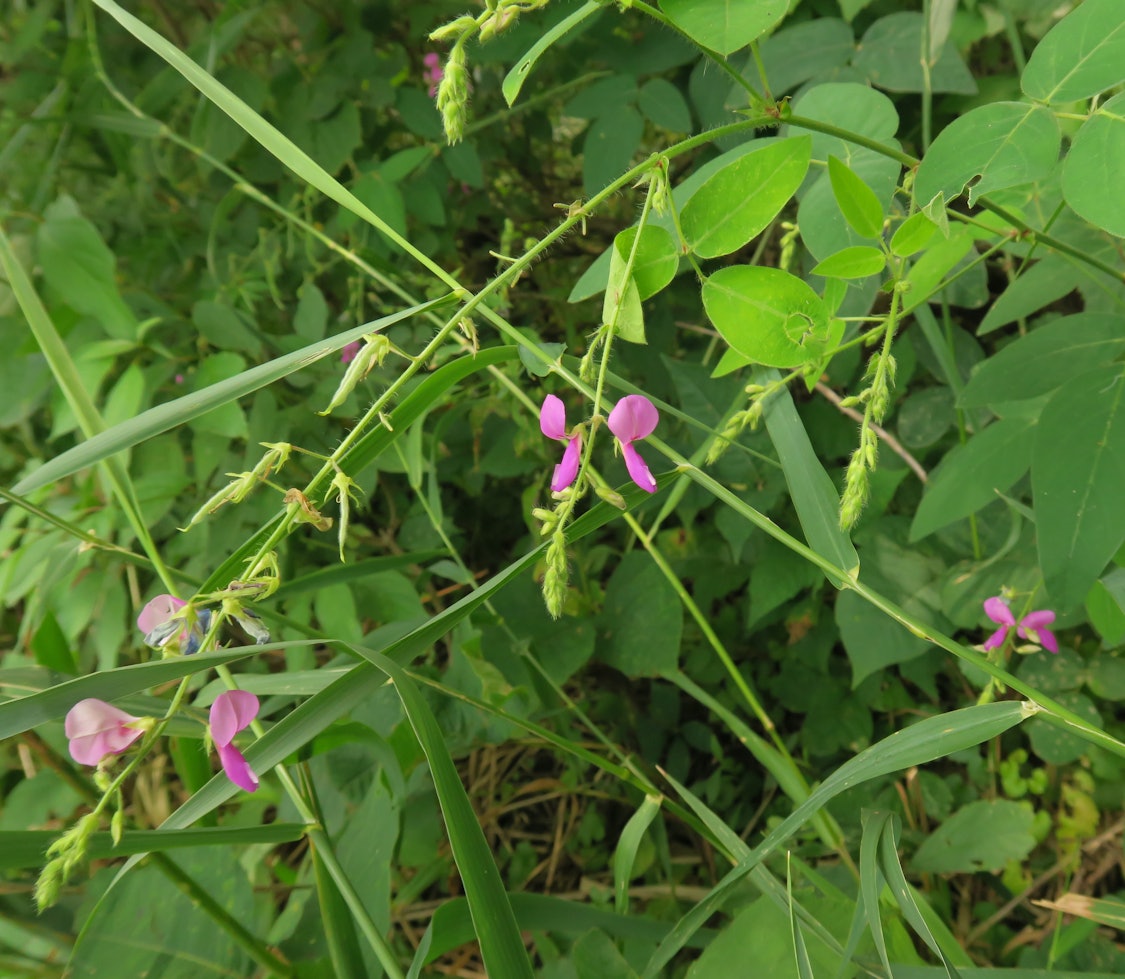
A closer look:


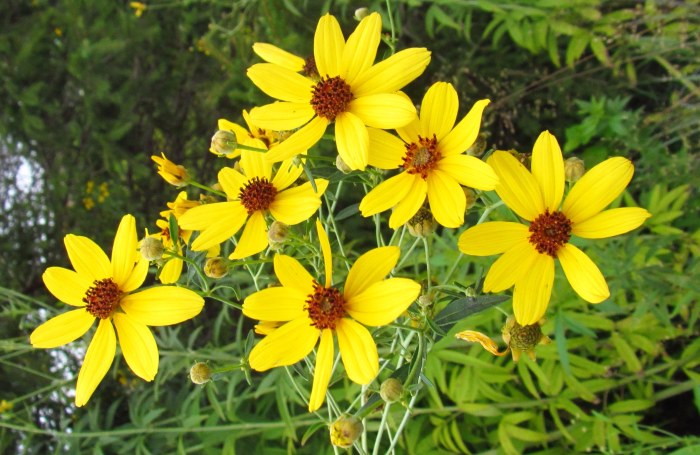
1 Comment
What a beautiful long diverse scroll of August flowers!
I could feel my blood pressure going down as I enjoyed these photos. Thank you so much for providing them. And I’m sure other readers are also hoping hard that your ankle will be completely well again soon.
PrairieFan Thu 18 Aug 8:54 PM